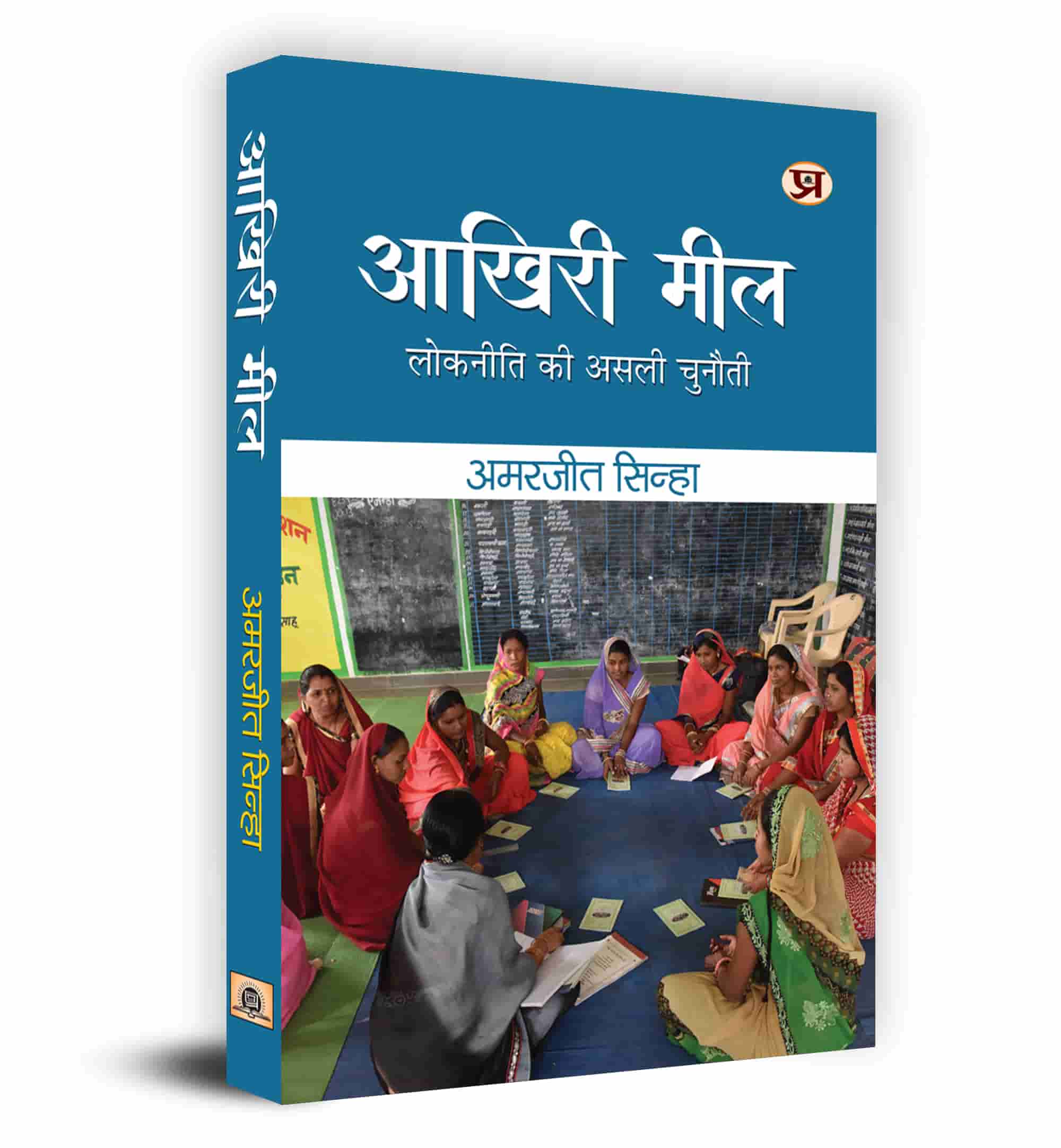₹750










This book on ‘Green Growth: Eco-Livelihood & Sustainability’ explores innovative & nature friendly alternate development of sustainability. Green Growth is a concept of sustainable way of growth and development while preventing environmental degradation and enhancing quality of life with innovations. Environment is the most significant dimension of life but too often its role and potential is underestimated when it comes to socio-economic development. The livelihood, skill development, employment potential, the challenges, opportunities, and solutions are studied and analyzed in a panoramic scenario. First the authors explore green growth as the new geopolitical paradigm to respond to the environment, climate challenges of today and resource challenges of tomorrow. Then analyze how eco-livelihood and sustainability generate the proper conditions for sustainability. In pursuit of development and poverty alleviation, there is great potential for green consumption, production, innovation, and entrepreneurial activity. This book prioritizes the vast opportunities from Green Growth and so highlights the obstacles. Green Growth will generate substantial benefits in the long run in the form of livelihood, pollution reduction, new markets etc. Green Growth is not just a short-term strategy but a transforming dynamic for both production processes and consumer behavior.
____________________________________________________________________________________________________________________________________________________________________________________________________________________________________________________________________________________________________
| Contents | 5.5.5. Concept of Organic Logo Pgs—208 |
| Foreword Pgs—7 | 5.6. Benefits of Organic Farming Pgs—209 |
| Preface Pgs—11 | 5.6.1. Benefits of Organic Fertilizer Pgs—210 |
| Terminology Pgs—33 | 5.7. Traditional Organic Farming Methods Pgs—211 |
| Acronyms Pgs—35 | 5.7.1. Vermicomposting Pgs—211 |
| 1. Introduction Pgs—39 | 5.7.2. Importance of vermicompost Pgs—211 |
| 1.1. Organic Agriculture Pgs—39 | 5.7.2.1. Source of Plant Nutrients Pgs—211 |
| 1.2. Importance of Bio-diversity in Organic Agriculture Pgs—42 | 5.7.2.2. Improved Crop Growth and Yield Pgs—212 |
| 1.2.1. Better for the Health Pgs—43 | 5.7.2.3. Reduction in Soil C:N Ratio Pgs—213 |
| 1.2.2. Better for the Environment Pgs—44 | 5.7.2.4. Improved Soil Physical, Chemical and Biological Properties Pgs—214 |
| 1.2.3. Better for the Economy Pgs—44 | 5.7.3. Methods of Vermicomposting Pgs—214 |
| 1.2.4. Sustainability Pgs—44 | 5.7.3.1. Pits below the ground Pits Pgs—214 |
| 1.3. Organic Farming and Environmental challenges Pgs—45 | 5.7.3.2. Heaping above the ground Pgs—214 |
| 1.4. Organic Farming and Economic Challenges Pgs—45 | 5.7.3.3. Tanks above the ground Pgs—215 |
| 1.5. Organic Farming and Social Challenges Pgs—46 | 5.7.3.4. Cement rings Pgs—215 |
| 1.6. Nature of Problem Pgs—47 | 5.7.3.5. Commercial model Pgs—215 |
| 1.7. Need Pgs—49 | 5.7.4. Vermicompost Preparation Steps in the Process Pgs—216 |
| 1.8. Review Pgs—52 | 5.7.4.1. Precautions During the Process Pgs—217 |
| 1.9. Hypothesis Pgs—55 | 5.7.4.2. How to Use Vermicompost? Pgs—218 |
| 2. Green Growth and Organic Farming Pgs—59 | 5.8. Modern Organic Farming Methods Pgs—219 |
| 2.0. Summary Pgs—59 | 5.8.1. Biodynamic: An Activated Organic Agriculture Pgs—219 |
| 2.1. Introduction Pgs—61 | 5.8.1.2. Biodynamic Preparations Pgs—220 |
| 2.2. Concept Pgs—63 | 5.8.3. Different Biodynamic Preparations Pgs—220 |
| 2.3. Green Technology Pgs—65 | Preparation 500 (Horn Manure) Pgs—222 |
| 2.4. Green Growth Pgs—68 | Characteristics: Pgs—222 |
| 2.4.1. Implications of Green Growth Pgs—72 | Material: Pgs—223 |
| 2.5. Organic Farming and Green Growth Pgs—73 | Methodology: Pgs—223 |
| 2.5.1. Organic Farming for Health and Prosperity Pgs—74 | Application: Pgs—224 |
| 2.5.2. Substitution of Labor for Herbicides and Pesticides Pgs—75 | Explanation: Pgs—225 |
| 2.6. Organic Farming and Carbon Pgs—76 | Characteristics: Pgs—225 |
| 2.7. Climate Change Pgs—79 | Material: Pgs—226 |
| 2.8. Carbon Sequestration Pgs—83 | Methodology: Pgs—226 |
| 2.8.1. Total Mitigating Potential of Organic Pgs—Sustainable Food Systems Pgs—84 | Application: Pgs—226 |
| 2.9. How Agriculture Influences Climate Change Pgs—85 | Frequency, Time and Place of Application: Pgs—227 |
| 2.9.1. Land-use Change Pgs—85 | Cow Pat Pit (CPP) 227 |
| 2.9.2. Fertilizer Application Pgs—86 | Cow Pat Pit (CPP) Manure Pgs—228 |
| 2.9.3. Enteric Fermentation Pgs—86 | Methodology Pgs—229 |
| 2.9.4. Fossil Energy Use Pgs—86 | Application Pgs—229 |
| 2.10. How Organic Farming can Contribute to Reducing Climate Change Impacts Pgs—87 | Methods Pgs—230 |
| 2.10.1. Use Nitrogen Fixing Legumes and Manures in Place of Manufactured Fertilizer Pgs—87 | Properties Pgs—231 |
| 2.10.2. Increased Greenhouse Gas Efficiency through Mixed Farming Systems Pgs—87 | Conclusion Pgs—232 |
| 2.10.3. Less Fossil Energy Use Pgs—88 | 5.8.4. Agnihotra Pgs—232 |
| 2.11. Greater Carbon Sequestration through Organic Farming Pgs—88 | 5.8.4.1. Resonance Point Pgs—234 |
| 2.11.1. Organic Farming Carbon Sequestration Pgs—89 | 5.8.4.2. Agnihotra Hut Pgs—235 |
| 2.11.2. Agro-forestry and Husbandry Carbon Sequestration Pgs—90 | 5.8.4.3. Om Tryambakam Hut Pgs—236 |
| 2.11.3. Mitigating Climate Change through Organic Agriculture and Localized Food Systems Pgs—91 | 5.8.4.4. Resonance Pillars Pgs—236 |
| 2.12. Energy Consumption and CO2 Emissions Pgs—93 | 5.9. Organic Plant Protection Pgs—237 |
| 2.12.1. Lower Greenhouse Gas Emissions Pgs—93 | 5.10. Innovative Organic Formulations Pgs—238 |
| 2.12.2. Mitigating Carbon Dioxide (CO2) Emissions Pgs—96 | 5.10.1. Foliar Spray Pgs—238 |
| 2.12.3. Mitigating Methane (CH4) Emissions Pgs—96 | 5.10.2. Seed Treatment Pgs—238 |
| 2.12.4. Mitigating Nitrous Oxide (N2O) Emissions Pgs—96 | 5.10.3. For Soil Treatment Pgs—238 |
| 2.12.5. Carbon Sequestration in Soil Pgs—97 | 5.10.3.1. Bijamrit Pgs—239 |
| 2.13. Challenges and Alternatives Pgs—97 | 5.10.3.2. Sanjivak Pgs—239 |
| 2.14. Conclusion Pgs—101 | 5.10.4. Jivamrit for Soil Enrichment Pgs—239 |
| 3. Sustainability and Organic Farming Pgs—105 | 5.10.5. Panchgavya: Instant Soil Enrichner Pgs—239 |
| 3.1. Context and Convention Pgs—105 | 5.10.5.1. Amritpani Pgs—240 |
| 3.2. Concept Pgs—108 | 5.10.5.2. Panchgavya Pgs—240 |
| 3.2.1. Organic Agriculture is Sustainable and Diverse Pgs—109 | 5.10.6. Plant Protection Pgs—241 |
| 3.2.2. Organic Farmers Conserve Resources Pgs—110 | 5.10.6.1. Neemastra Pgs—241 |
| 3.3. Problems in Introducing Organic Farming Pgs—110 | 5.10.6.2. Brahmastra Pgs—241 |
| 3.4. Organic Farming Pgs—111 | 5.10.6.3. Agneyastra Pgs—241 |
| 3.5. Sustainable Agriculture: Opportunities Pgs—113 | 6. Policy and Management Pgs—242 |
| 3.6. Organic Farming Pro-Poor, Pro-Women Pro-Rural Pgs—115 | 6.1. Legislation on Organic Agriculture Pgs—242 |
| 3.7. Quasi-Organic Farming Pgs—117 | 6.2. Government Policy for Organic Agriculture Pgs—244 |
| 3.8. Sustainable Development Pgs—118 | 6.3. Limiting Factors of Organic Market Pgs—247 |
| 3.8.1. Definition and Basics Pgs—118 | 6.4. Training and Extension for Organic Agriculture Pgs—248 |
| 3.8.2. Brundtland Report Pgs—118 | 6.5. Policy Dimensions on Green Growth Pgs—251 |
| 3.8.3. Environmental Management and Sustainability Pgs—120 | 6.5.1. The Macro Economic Environment for Agricultural Adaptation to Green Growth Pgs—251 |
| 3.8.4. Human Consumption Pgs—123 | 6.5.2. Policies for Increasing Productivity: Environment of Green Growth Pgs—254 |
| 3.8.5. Energy Pgs—123 | 6.5.3. Policies Affecting Organic Agricultural Production Pgs—256 |
| 3.9. Ecological Perspective Pgs—123 | 6.5.3.1. Policies Towards Internalizing the Cost of Negative Externalities Pgs—257 |
| 3.9.1. Economic Sustainability Pgs—124 | 6.5.3.2. Policies to Increase Positive Externalities and Public Goods Pgs—259 |
| 3.9.2. Social Sustainability Pgs—125 | 6.6. From Policy Perspective Pgs—262 |
| 3.9.3. Employment Opportunities Pgs—127 | 6.7. From Farmers’ Perspective Pgs—262 |
| 3.9.4. Environmental Security Pgs—128 | 6.8. From NGO’s Perspective Pgs—263 |
| 3.9.4.1. A. Farm-friendly Technology Pgs—129 | 6.9. From Traders Perspective Pgs—264 |
| 3.9.4.2. Export-friendly Agriculture Pgs—129 | 6.10. From Green Input Producers’ Perspective Pgs—264 |
| 3.9.4.3. Eco-friendly Pgs—130 | 6.11. From Institutional Perspective Pgs—265 |
| 3.9.4.4. Sustainable Pgs—130 | 6.12. Policies Affecting Organic Farming Pgs—267 |
| 3.9.4.5. Adoptable Pgs—130 | 6.13. Policies Affecting Innovation Pgs—269 |
| 3.10. Sustainability Crisis Pgs—130 | 6.14. Policies Affecting the Functioning of Markets Pgs—272 |
| 3.11. Conclusion Pgs—132 | 6.15. Policies for International Collaboration Pgs—273 |
| 4. Eco-livelihood and Organic Farming Pgs—135 | 6.16. Market of Organic Products Pgs—273 |
| 4.1. Organic Farming Pgs—135 | 6.16.1. Organic Products Premium Prices Pgs—274 |
| 4.2. Principles of Organic Farming Pgs—140 | 6.16.2. Organic Products Subsidies Pgs—274 |
| 4.3. The Four Pillars of Organic Farming Pgs—140 | 6.16.3. Domestic Market of Organic Products Pgs—274 |
| 4.4. Organic Farming in India: The Way Forward Pgs—141 | 6.17. Inspection and Certification Policy Pgs—275 |
| 4.4.1. Traditional Practices Pgs—143 | 6.17.1. Inspection and Certification of Organic Export Products Pgs—277 |
| 4.4.2. Modern Developments Pgs—145 | 6.17.2. Policy Issues: Organic Trade and Certification Pgs—279 |
| 4.5. Fundamentals of Organic Farming Pgs—147 | 7. Technology, Importance and Case Studies Pgs—281 |
| 4.5.1. Soil Health: The Basis for Organic Farming Pgs—147 | 7.1. Organic: Growth of Technology Pgs—281 |
| 4.5.2. Pest Management: Working with Nature Pgs—149 | 7.2. Global Network for Organic Farming Research Pgs—282 |
| 4.5.3. Weed Management: Multiple Tactics Work Best Pgs—150 | 7.3. Network Project on Organic Farming Pgs—283 |
| 4.6. Advantages of Organic Farming Pgs—151 | 7.4. Public and Private Support to Organic Farming Pgs—283 |
| 4.6.1. Nutritional Food Security Pgs—152 | 7.5. Participatory Guarantee System (PGS) 285 |
| 4.6.2. Livelihood Security Pgs—153 | 7.6. Remote Sensing/GIS and Organic Farming Pgs—286 |
| 4.6.2.1. The Need for Livelihoods Enhancement Pgs—155 | 7.6.1. Precision Organic Farming through Satellite Technologies Pgs—286 |
| 4.6.2.2. Adopting Organic Farming as Part of a Livelihood Strategy Pgs—157 | 7.6.2. Precision Farming through Wireless Sensor Networks Pgs—289 |
| 4.7. Organic Farming is Good for the Economy Pgs—158 | 7.7. Organic Farmers and NGOs Pgs—293 |
| 4.7.1. National Level Pgs—159 | 7.8. Case Studies Pgs—294 |
| 4.7.2. Promoting Green Agriculture Market Pgs—159 | 7.8.1. Vermicomposting: A Livelihood Enterprise for Rural Women Pgs—294 |
| 4.7.3. Facilitating Factors for Greening of Indian Agriculture Pgs—160 | 7.8.2. Adarsha Watershed, Kothapally Pgs—294 |
| 4.7.4. Factors Constraining Greening of Pgs—Indian Agriculture Pgs—161 | 7.8.3. APRLP Watershed Village Pgs—295 |
| Factors limiting Bio-inputs Market Pgs—161 | 7.8.4. Tata-ICRISAT-ICAR Project Pgs—296 |
| 4.7.4.1. Producers’/Distributors’/Traders’ point of view: Pgs—161 | 7.8.5. Farm of Shri Ramesh Tiwari Hasanganj, Dist: Unnao, UP Pgs—296 |
| 4.7.4.2. From Users’ (Farmers’) Point of View Pgs—162 | 7.8.5.1. Conventional Agriculture Pgs—296 |
| 4.7.4.3. From Promoters’ (Government’s) Point of View Pgs—162 | 7.8.5.2. With Homa Therapy Pgs—296 |
| 4.8. Organic Agriculture and Rural Development Pgs—163 | 7.8.5.3. Conventional Agriculture Pgs—297 |
| 4.8.1. Enhances Governance Pgs—163 | 7.8.6. Bhrugu Aranya Homa Farm Wysoka, Nad Lassem, Poland Pgs—298 |
| 4.8.2. Creates a Vibrant Economic Space Pgs—163 | 7.8.7. Manas Krushi Farm of Shri Venkatesh Kulkarni Sajiwali, Dist: Thane, Maharashtra Pgs—299 |
| 4.8.3. Maintains a Healthy Environment Pgs—163 | 7.8.8. National Organic Farming Congress, Raipur, Chhattisgarh State Pgs—299 |
| 4.8.4. Builds the Social Capital of Rural Areas Pgs—163 | 7.8.9. Farm of Shri Abhay Mutalik Desai Sutakatti, Dist: Belgaum, Karnataka Pgs—300 |
| 4.8.5. Conserve Natural Resources Pgs—164 | 7.8.10. Homa Farm of Prestige Feed Mills Dewas, District: Indore, MP Pgs—301 |
| 4.8.6. Poverty Pgs—164 | Soybean Pgs—301 |
| 4.9. Organic Agriculture and CDM Pgs—165 | Homa Organic Farming in Soya Bean showed: Pgs—303 |
| 4.10. Innovation and Productivity Pgs—166 | 7.8.11. Organic Treatments in Aloevera Submitted by Reiner: Aloevera Pgs—303 |
| 4.11. Organic Agri-biotechnologyVision Pgs—167 | 7.8.11.1. Discussion Pgs—304 |
| 4.12. Global Scenario Pgs—169 | 7.8.12. Organic Treatments in Lemongrass Submitted by Reiner Pgs—305 |
| 4.13. Organic Agriculture Worldwide Pgs—173 | 7.8.12.1. Discussion Pgs—306 |
| 4.13.1. National Scenario Pgs—173 | 7.8.12.2. Conclusion Pgs—307 |
| 4.14. Organic Farming: Relevance to India Pgs—174 | 7.9. Motivation for Growing Organic Products Pgs—307 |
| 4.14.1. Growth of Organic Farming Pgs—175 | 7.10. Innovative Practice Summary Pgs—311 |
| 4.14.2. Organic Farming in India Rural Economy Pgs—177 | 7.10.1. Seeing-is-Believing Precision Farming Pgs—311 |
| 4.15. Organic Farming in India Pgs—179 | 7.10.2. Improving Nitrogen Fertilization in Mexico Pgs—313 |
| 4.15.1. Organic Farming: Prospects and Limitations Pgs—181 | 7.10.3. Monitoring Livestock to Prevent Pasture Damage Pgs—314 |
| 4.15.2. High Premium Pgs—183 | 7.10.4. Using Land Sat to Assess Irrigation Systems in Mali Pgs—315 |
| 4.15.3. Low Investment Pgs—183 | 7.11. Conclusions Pgs—317 |
| 4.15.4. Less Dependence on Moneylenders Pgs—183 | To Farmers Pgs—317 |
| 4.15.5. Traditional Knowledge Pgs—184 | To Industries Pgs—317 |
| 4.16. Organic Food Consumption in India Pgs—184 | To Environment Pgs—318 |
| 4.16.1. Organic Food Costs and Exports in Future Pgs—186 | To National Economy Pgs—318 |
| 4.17. Summary Pgs—187 | 8. Application and Results Pgs—319 |
| 4.18. Conclusion Pgs—189 | 8.1. Conceptual Approach Pgs—319 |
| 4.18.1. Potential of Organic Agriculture Pgs—189 | 8.2. Organic Agriculture as a Poverty Reduction Strategy Pgs—320 |
| 4.18.2. Limitations for Organic Agriculture Pgs—190 | 8.2.1. Organic Products and Production Costs Pgs—320 |
| 4.18.3. Challenges for Future Developments Pgs—191 | 8.2.2. Organic and Production Risks Pgs—321 |
| 5. Agro-biotech and Organic Techniques Pgs—192 | 8.2.3. Organic Farming and Profitability Pgs—322 |
| 5.1. Introduction Pgs—192 | 8.2.4. Organic and Broader Economy Pgs—322 |
| 5.1.1. Definition Pgs—194 | 8.2.5. Organic and Food Security at the Household Level Pgs—323 |
| 5.1.2. Concept Pgs—194 | 8.2.6. Organic and Food Security at the National Level Pgs—323 |
| 5.1.3. Aim of Organic Farming Pgs—195 | 8.3. Study Details Pgs—323 |
| 5.1.4. Characteristics of Organic Production Pgs—195 | 8.3.1. Area of Study Pgs—323 |
| 5.1.5. Growth and Future Prospects Pgs—196 | 8.4. Research Methodology Pgs—325 |
| 5.2. Need for Organic Farming in India Pgs—196 | 8.5. Results Pgs—331 |
| 5.2.1. Importance Pgs—197 | 8.5.1. Organic Farming for Livelihood Pgs—331 |
| 5.2.2. Organic Foods vs. Conventional Food Pgs—198 | 8.5.2. Organic farming for Sustainable Development Pgs—333 |
| 5.3. Organic Foods: A Far More Nutritious Choice Pgs—200 | 8.5.3. Organic Farming for Green Growth Pgs—335 |
| 5.3.1. And Don’t Forget About the Chemical Pgs—Toxins! Pgs—202 | 8.6. Highlights of Other Findings on Cost and Return from Organic Farming Pgs—337 |
| 5.4. Traditional, Local Farming on the Rise Pgs—202 | 8.7. Discussion Pgs—341 |
| 5.5. Organic Certifications Pgs—203 | 8.7.1. Organic Agriculture as a Poverty Reduction Strategy Pgs—343 |
| 5.5.1. The Responsible Body and Certification Pgs—205 | 8.8. Conclusion Pgs—345 |
| 5.5.2. Guidelines for Organic Certification Pgs—205 | 9. Synthesis and Conclusion Pgs—348 |
| 5.5.3. Group Certification Standards Pgs—205 | 9.1. Synthesis Pgs—348 |
| 5.5.3.1. General Requirement Pgs—205 | 9.2. Discussion Pgs—350 |
| 5.5.3.2. Constitution of Group Pgs—206 | 9.3. Conclusion Pgs—352 |
| 5.5.3.3. Internal Standards for Group Certification Pgs—206 | 9.4. Recommendations Pgs—356 |
| 5.5.3.4. Granting of Certification Pgs—207 | References Pgs—358 |
| 5.5.4. Organic Certification Brand Pgs—207 | Website Pgs—371 |

Dr. Rajesh Kumar Dubey is an academician and sustainable development facilitator. His work on Agri-biotech for Green Growth & Sustainable Development is well appreciated in the academic and industrial sectors. He has long association with Prakriti Bharti and has worked on the innovations focused to eco-friendly livelihoods, natural resource management and low cost sustainable development models. He worked to promote innovations for inclusive development & sustainability in the projects, development, implementations, monitoring and evaluation.
He holds rich experience of working with World Bank Aided Projects on Action Research for Sustainable Development and Agriculture Diversification Support. Besides having working association & experience of institutional development and activity dissemination he has published number of books, periodicals, research papers and organized numerous national, international conferences, training programs & exhibitions.
Dr. Dubey has rich and vivid experience, expertise and innovative ideas of developing new academic & vocational course modules and policy papers in the academic, research & development fields.